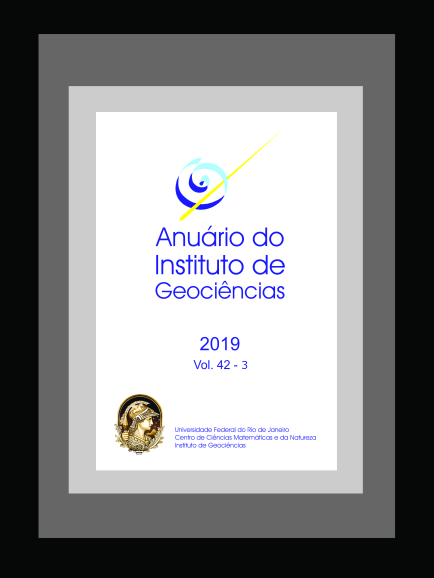Mapping Nutrients Content in a Nematode-Infected Coffee Plantation by Empirical Models Derived from RapidEye Image
DOI:
https://doi.org/10.11137/2019_3_164_177Palavras-chave:
Nutrient content estimation, Nematodes in the coffee crop, Multispectral image RapidEyeResumo
Nematodes are among the most important coffee pathogens, causing significant losses of productivity. The infection of the coffee plant by nematodes can compromise the root system inducing the manifestation of reflex symptoms in its upper part. In addition, nutritional deficiencies may trigger an increase in host predisposition to various other pathogens. Thus, the monitoring of the nutritional levels of plants grown in areas predisposed to the occurrence of nematodes is fundamental. In this study, it was evaluated the potential of empirical models to estimate macro and micronutrient contents in an coffe experimental nematode infested area from a RapidEye multispectral image. For this purpose, laboratory analyzes were performed to determine the contents of macro and micronutrients, as well as the level of nematode infestation, in two experimental plots located in the coffee region of Monte Carmelo (MG). It was verified that the correlation between nutrient content and nematode concentration was higher for the Mg, S, Cu and Mn (correlation coefficients of 0.62, 0.51, 0.71 and 0.75, respectively), while other nutrients had higher correlations with spectral bands or vegetation indices, mainly Ca which had coefficients higher than 0.7 with all indices derived from the spectral bands of red, red edge and near infrared. Empirical models for nutrient estimation were generated from spectral bands and vegetation indices with correlations greater than 0.5. The red edge band, positioned in a spectral region sensitive to variations in vegetation, individually participated in the models to infer the concentrations of the macronutrients Mg and S, besides the micronutrients B, Cu, Fe and Mn, but all calibrated with correlation coefficients below 0,41. The near infrared band was used in the estimation of the N, P and Na contents (R2 equal to 0.25, 0.36 and 0.49, respectively). The NDVI participated in the formulation of the inference model of Ca content and resulted in the highest calibration R2 (0.61), although the validation error was high (13.56%). The choropleth maps of Ca, Mg, Cu, Fe, Mn and Zn spatial distribution had a similar configuration, indicating almost homogeneous and high concentrations of these nutrients in most of the experimental area. The Na and B contents were different in the two plots of the experimental area, while K and S had a more heterogeneous distribution. The maps of N and P reflect well the deficiency of these nutrients in the whole area, mainly in the P content. The empirical models adjusted for the estimation of most of the nutrients were consistent with the condition of excess or deficiency of nutrients in the experimental area.Downloads
Publicado
2019-12-21
Edição
Seção
Artigos
Licença
Os artigos publicados nesta revista se encontram sob a llicença Creative Commons — Atribuição 4.0 Internacional — CC BY 4.0, que permite o uso, distribuição e reprodução em qualquer meio, contanto que o trabalho original seja devidamente citado.
















 Exceto onde indicado de outra forma, o conteúdo deste site é licenciado sob uma licença
Exceto onde indicado de outra forma, o conteúdo deste site é licenciado sob uma licença 